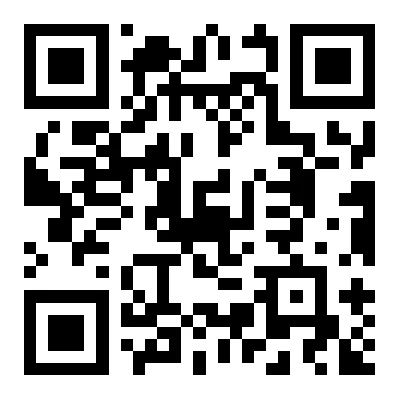Introduction to American tourist calling cards
1. Travel to the United States to buy a phone card. It is recommended to buy it in advance in Taobao in China, and choose a suitable package according to the number of travel days.
2. Contact customer service to open the date of use after landing in the United States to ensure that the domestic SIM card can be used after arriving in the United States.
3. Confirm the mobile phone standard and supported frequency bands, because the network standard in the United States is different from that in China, and you need to choose a compatible SIM card.
There are mainly four operators in America: Verizon, Sprint, AT&T and T-Mobile. Verizon and Sprint use CDMA technology, while AT&T and T-Mobile use GSM technology. Confirm whether the mobile phone is compatible with the selected SIM card before purchasing.
5. When choosing SIM card as the travel destination, if you plan to visit go on road trip or other remote areas such as national parks, you should avoid choosing Sprint and T-Mobile, because the signal in these areas may be poor.
6. Most operators offer prepaid traveler packages, including telephone, data and SMS services. Choose the right package according to your needs.
7. If you haven't bought it from Taobao or are not sure whether it is cheaper, you can consider applying for a SIM card at the airport after landing in the United States.
8. Public Wi-Fi in big cities in the United States is relatively developed. If there is no network available, hotels, cafes, libraries and other places can temporarily solve the problem.
9. A tourist bought a SIM card from Taobao in advance, but there was a problem when using it. The mobile phone showed the network phone number of Guangzhou, and it has been unable to be used since then.
10. the price of some SIM cards on x treasure may be cheaper than that in the local area, which is more suitable for tourists. The most important thing is that you can use the SIM card when you get off the plane, while buying a SIM card locally may take a long time to queue up at the airport, although there are more package options.
Nowadays, more and more friends choose to travel to the United States. Whether traveling or studying abroad, they will face a problem, that is, what to do with calling cards when they go to the United States? Is the concept of calling cards the same as that in China? We know that real-name registration system is required in China now. What are the rules in the United States? The following small series will bring you an American mobile phone card strategy.
1. Rent WiFi, buy a mobile phone or open international roaming?
If you don't know anything about mobile phones and are too lazy to operate, rent Wifi; If you are willing to study, it is more appropriate to buy a phone card. Especially for iPhone users, there is basically no adaptation problem, which is the most suitable for buying cards. In terms of price, calling cards are cheap.
1) rent WiFi
Advantages: simple to use, can be used on any mobile phone, and there is no adaptation problem.
Disadvantages: it's a bit troublesome to rent, the equipment is old and easy to break, and you have to take another charging treasure to charge it.
2) American mobile phone card
Advantages: the price is low, you can call short messages and throw them away when you are finished.
Disadvantages: To change the card, the mobile phone has adaptation problems, and some Android phones need to be set up online.
3) International roaming
China Mobile International Roaming Charge
China Unicom international roaming charges
Post-paid tariff inquiry
Prepaid tariff inquiry
International roaming charges of China Telecom
2. Which operator in the United States should I choose?
Compared with the existing three major operators in China, China Mobile, China Unicom and Telecom, there are many more operators in the United States, including large national operators, small local operators and many virtual operator.
1) National operators
The first echelon is now two major operators, AT&T and Verizon. Its network coverage is the best and its speed is fast. But inaccessible places are generally not covered.
The second echelon includes T-Mobile and Sprint. Coverage is poor, no problem in a big city, but it will be worse when you leave the city.
Verizon and Sprint use CDMA system. American CDMA mobile phones don't have SIM cards. In the past, China CDMA mobile phones could only roam and could not change their numbers. So Verizon and Sprint just ignore it.
AT&T and T-Mobile are the only two operators to choose from. I also saw on Taobao that both operators' cards are on sale, and T-Mobile's cards are much cheaper.
There is a gap between T-Mobile's network coverage and AT&T. The suggestion is that if you mainly stay in big cities, T-Mobile will do. If you are traveling, especially driving freely, it is recommended to use AT&T.
Regarding the difference of signal network coverage between T-Mobile and AT&T, I found a map from official website for your own reference. The first one is the network coverage map of T-Mobile, and the second one is the network coverage map of AT&T. The gap is still very big.
T-Mobile's network coverage map
AT&T's network coverage map
You can also log on to this website directly: check whether there is operator's network coverage where you want to go. Orange is the place with strong signal and green is the place with the weakest signal.
2) Local operators
There are many, such as UScellular and LEAP. Basically, don't think about it unless you are extremely familiar with where you are going.
3) virtual operator
Virtual operator is very common in the world, and there are some in the United States, such as H2Owireless and Red.
Pocket, Lyca, etc. The so-called virtual operator does not build its own network. It wholesales some numbers from operators, and then retails them to users, bearing its own brand. So choose virtual operator card should pay attention to is:
First of all, look at which operator's network it uses: the price will generally be cheaper than the operator's, which is normal.
Because operators often guarantee the best service to their users, giving virtual operator users is generally equivalent to second-class citizens.
Under the same conditions, the actual rate of its users is much worse than AT&T's own users. See if it supports 4G: America's 4G network has been built for three years, and it has been covered all over the country.
There is also a small trap. Many cards claim to be "unlimited traffic", but in fact they are all 2G traffic.
At this time, we must take a closer look at the high-speed 3/4G traffic provided. For example, AT&T native card has no unlimited traffic package, and virtual operator card has some gimmicks with unlimited traffic, but the actual experience is much worse than native card.
Many virtual business cards are "unlimited international direct dial calls", which also has traps.
I have personal experience that the virtual business card can indeed make direct international calls, but it can't be used at all.
When you are busy, such as at night or all day on weekends, you can't get through the phone at all, even if you get through, the voice quality is unacceptable.
In fact, the so-called direct dial telephone is also an IP telephone, and the capacity of the virtual IP telephone system must be insufficient. Therefore, only the native card is directly the operator's system, and the direct dial telephone is guaranteed.
To sum up, most of them buy AT&T native cards directly. The price is higher, but if you want to use 4G freely, it is the best choice.
3. How to choose a calling card?
When the operator is selected, the card will be easy to choose. Considerations include:
1) Price
The cost of buying an AT&T card in the United States is generally around $70 plus tax. Domestic prices range from 200 to 500. The specific price is on Taobao to search for "American ATT"
SIM card ".
2) Confirm whether 3/4G data is supported.
3)SIM type
IPhone5/5S/5C/6/6P uses Nano card; iPhone
4/4S and most other mobile phones use Micro cards, commonly known as small cards; Only a few mobile phones still use big cards. So it's best to tell the seller your mobile phone model when you buy it.
4) The card contains the package.
According to your own itinerary and usage, decide the voice duration, data flow and validity period. Because traveling in a foreign country, the traffic demand will often be larger than that in China, so you can refer to your monthly package traffic in China and increase it appropriately.
5) Internet settings
Some mobile phones need to set an access point (APN). If you find that you can make a phone call but can't surf the Internet in the United States, don't be nervous. Generally speaking, you need to set up an APN. The settings are very simple, just follow the instructions of the operator.
6) Hotspot function
If you want to use your mobile phone as a hotspot to share with other devices, you need to turn on the hotspot function. Note: At present, most cards used for iPhone can't be hot, because AT&T can restrict it, and only native cards can be hot-shared.
7) make a phone call
Call the United States: dial the number directly.
Call China mobile: 011+86+ mobile number.
Call China fixed line: 011+86+ area code (remove 0)+ fixed line number.
T-Mobile card calls back to China: add 01186 or 0086 or +86 before the number (long press 0 is+).
China calls the American card number: dial 001 or +1 (long press 0 is+).
4. Can domestic mobile phones be used in the United States?
Both telephone and 2G Internet access functions can be used, but 3G and 4G Internet access also need to look at the specific mobile phone model.
5. surfing the internet
WIFI service has covered the whole country.
Many cafes, restaurants and public libraries offer free WIFI access.
To find a free WIFI access point, click:
Many hotels offer free WIFI for laptops, tablets and smartphones.
Access service.
Luxury hotels usually charge for this service, while slightly cheaper hotels usually provide it for free.
Some hotels only provide WIFI access in the lobby, or have computers in the lobby for passengers to use.
WIFI is usually provided on trains, cars and planes.
Service.
For domestic flights in the United States, passengers are allowed to use computers, tablets, reading devices and smart phones as long as they are set to flight mode.
Before traveling, please browse the website of the transportation service provider to see if WIFI is available.
Service and whether it is charged.
Prev: Lanzhou Shahu Tourism
Next: Heshan tourist area






